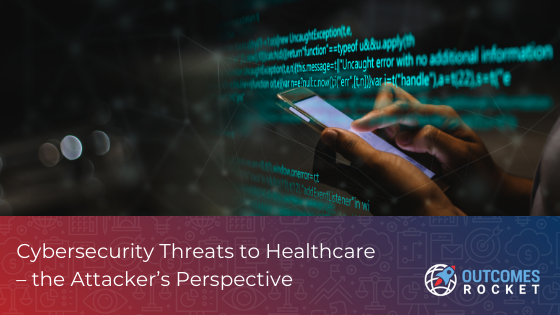
Healthcare was put under severe test last year when the COVID-19 pandemic hit the country, but it’s not the only battle the industry faced and is still facing.
Healthcare Finance reported that there was an almost 50% increase in cybersecurity attacks between February and May 2020. According to the report, because more people are using remote care, it’s a lot easier for hackers to gain control of patients’ medical devices.
A similar report was published by the Computer Weekly website, adding that ransomware, botnets, remote code execution, and DDos are the most common cybersecurity incidents faced by healthcare organizations.
Why is healthcare a favorite target?
U.S. healthcare institutions are often attacked by cyber hackers because it is one of the most important industries and it has a large amount of data. We are talking tons of data from medical records to medical history, insurance records, and more.
Healthcare also has plenty of new technologies promising improved care and smoother work efficiency. But those same technologies increase vulnerability which leads to threats in cybersecurity. To protect their assets health organizations need many different kinds of security systems. With so many different tools in place, it’s easy for threat actors to find places to “sneak through.”
Another reason is that hospitals and health organizations are easy to hack. Many hospitals have low security so it’s relatively easy for hackers to get in and steal information. The stolen medical records are sold on the darknet and they can fetch a hefty price. Buyers can use that information to create new IDs, buy drugs, file false insurance claims, and more.
How can healthcare organizations mitigate these record numbers of attacks on their systems?
To protect their assets health organizations need many different kinds of security systems. With so many different tools in place, it’s easy for threat actors to find places to “sneak through.” Healthcare organizations can now eliminate those cracking by pulling their security tools into a single converged solution while at the same time reducing costs.
Cato Networks Ltd is a cloud-based network security provider founded in 2015 by Shlomo Kramer and Gur Shatz. Shlomo also co-founded Check Point Software and Imperva, and Gur is a co-founder of Incapsula Inc.
Created in 2015 and based in Tel Aviv, Cato Networks is committed to “Delivering a next-generation, secure networking architecture that eliminates the complexity, costs, and risks associated with legacy IT approaches based on disjointed point solutions.”
The core product is the Cato SASE cloud, a cloud service platform that converges an optimized, global private backbone, SD-WAN, and a full enterprise-grade network security stack to deliver secure, optimized global access for all company sites, cloud infrastructure, and mobile users.
SASE stands for Secure Access Service Edge, and it’s an emerging networking technology introduced by Gartner. SASE combines network and security functions into a cloud service, providing a single platform for secure access to any application or data repository located anywhere. This transformation of enterprise networking and security allows IT to provide a holistic and adaptable service without the cost, complexity, and management challenges of individual point solutions. For customers, SASE delivers safety through the firewall as a service (FWaaS), security through the zero-trust network access (ZTNA) and network security, improved controls through the web application, and API protection as a service (WAAPaaS), and a variety of threat detection functions.
Some of the benefits of SASE listed on the Cato Network website are:
With the Cato SASE platform, enterprises and organizations can easily migrate from a private legacy network, such as one built around MPLS to SASE using Software Defined Wide Area Network (SD-WAN).
MPLS is a long-standing service provider technology that allows customers to connect private sites and data centers into a private network. As a private carrier service, MPLS services have been marked by high costs, scarce capacity, and long deployment times. With SD-WAN, healthcare organizations can continue to work across MPLS as they transition to more affordable and ubiquitous Internet service.
SD-WAN devices establish encrypted tunnels to the local entry point into the SASE network, what’s called the point of presence (PoP), securely connecting users to the applications.
By leveraging SD-WAN, the Cato SASE Cloud can secure your business network, easily detect compromised endpoints, and deliver high-quality services at a lower cost.
To secure the entire healthcare organization, the Cato SASE Cloud leverages consists of the following components.
For healthcare organizations struggling with reliable and affordable global connectivity, the Cato SASE Cloud provides the answer. Cato’s global private backbone delivers end-to-end optimization, allowing for far better performance than the public Internet at a more affordable cost. And as a private managed network, the Cato global private backbone suffers none of the unpredictability and security weaknesses associated with the Internet.
Like we said, to eliminate expensive connectivity you need a better way of connecting locations. Cato’s edge SD-WAN device, the Cato Socket, improves capacity and resiliency by spreading the traffic across multiple Internet links. Because multiple aggregation links are supported, Cato can balance traffic across last mile circuits. When a blackout occurs, Cato automatically transfers the traffic to the best available link.
And protecting your data and network becomes much easier with Cato’s Security as a Service.
A fully managed suite of enterprise-grade and agile network security capabilities, Cato’s Security as a Service includes a next-gen firewall/VPN, Secure Web Gateway, Advanced Threat Prevention, Cloud and Mobile Access Protection, and a Managed Threat Detection and Response (MDR) service. Healthcare IT professionals continue to own security policy definition. Those policies are applied to all resources connecting to the Cato backbone, eliminating the holes that too often form when using multiple security tools. At the same time, Cato is responsible for updating, patching, and maintaining the security services against the latest threats, freeing healthcare IT from that cost and burden.
Threat actors exploit network permissions to move laterally across networks and gain access to unauthorized resources. Cato builds secure access into its network preventing that from happening for all users whether in the office or remote. With zero-trust network access, clients are required first to prove their identities using strong multi-factor authentication. Even then, once on the corporate network, ZTNA restricts users to accessing only permitted resources based on their identity, access policy, and user context.
As healthcare looks to leverage the cloud, they’re further challenged with providing secure access. Cato natively integrates with major cloud providers using secure IPSec tunnels, thereby eliminating the need for cloud connectivity solutions. The connection process is fast and takes only a few minutes.
Running a healthcare network and security infrastructure is never easy but Cato makes it much simpler with a single pane of glass. Through the Cato management application, healthcare IT defines, monitors, and manages its networking and security infrastructure. The management console provides detailed analytics on network traffic and security events. And unlike legacy carrier services that required IT to open tickets for every little change, Cato allows for self-service management where IT can make the changes when they want and how they want. (Co-management and fully managed options are also available).
Since healthcare organizations are prone to cyber-attacks, using the Cato SASE Cloud platform ensures that your data is safe and secure.
Etay Maor, Senior Director of Security Strategy at Cato Networks, explained more about security.
“We are the age of working from home. If you have a physician working from home, shouldn’t he get the same level of security as if he was in the office today? The answer is they’re not getting it. Providing everybody, whatever devices they use, wherever they are, the same level of security and networking is something that is top of mind for us. We can help customers identify threats before they even start.”
He provided suggestions on what organizations can do to increase web security, from keeping everything up to date to not using knowledge-based authentication to authenticate people.
By following these simple steps and maximizing the use of Cato SASE cloud, hospitals and health facilities can increase risk-preparedness and mitigate cybersecurity threats.
To listen to my full interview with Etay Maor, visit https://outcomesrocket.health/cato-networks/2021/05/
According to the 2020 Centers for Disease Control and Prevention report, roughly 34.2 million Americans have diabetes,...
Read MoreAs a farmer, Rod was used to long days. He worked 18 hours a day, 7 days...
Read MoreWith investors receiving hundreds of pitch decks every year, how do you create a compelling presentation that...
Read More
Brittany Busse Co-Founder, President, and Chief Medical Officer at
ViTelHealth


Stephen Thorne Founder and CEO at
Pacific Dental Services

Keith Carlson Nurse Career Coach